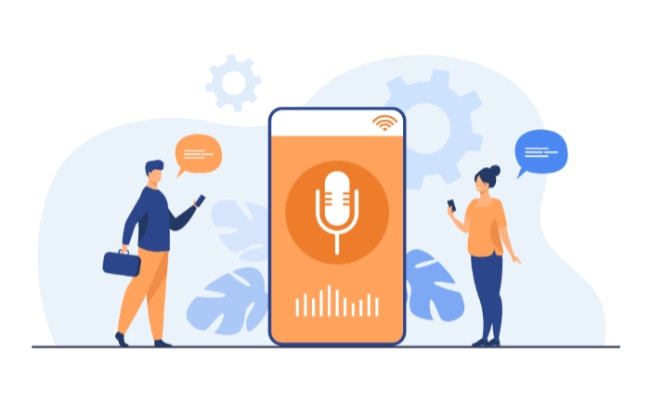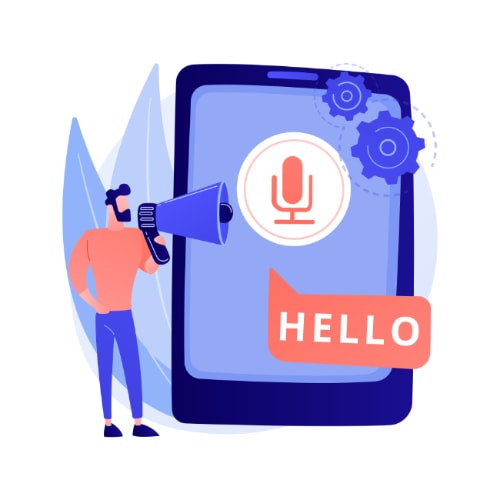What Is Speech Recognition? The Future of Technology
The term “speech recognition” may sound like something out of a science fiction novel, but it is actually real.
Speech recognition software has been around for a while and can be found in many different types of devices. It is used in simple applications such as answering machines, where it is used to answer the phone and record messages.
It is also used in hands-free cell phones, GPS devices, toys that respond to voice commands, and even Google Search.
For those who are unfamiliar with speech recognition, there are some important things that you should know about the technology.
What Is Speech Recognition?
Speech recognition technology is a type of artificial intelligence that involves understanding what a person says. It usually does this by looking at the words being said and then comparing them to a predefined list of acceptable phrases.
Speech recognition software has an extensive list of words and phrases programmed into it, including things like proper names, slang, numbers, letters from the alphabet, and other common phrases.
When a person speaks into a device that uses speech recognition software, the software will analyze what is being said and then compare it to the list of acceptable phrases.
If it finds a match, it will respond accordingly. If there is no match, the software may still be able to interpret what was said based on the context of the conversation.
How Does Speech Recognition Work?
There are three primary components to speech recognition: the microphone, the software, and the language database.
The microphone is used to capture the sound of a person’s voice. The software takes that sound and breaks it down into individual words. The language database stores all of the information about the words and phrases that the software is looking for.
Once these three components are set up, they work together to decipher what a person has said and convert it into text. If the microphone picks up enough of the sound and if all of the pre-programmed rules have been met, then the words can be converted into text.
That processed text can then be used in a number of different ways, such as being displayed on a screen or being used to control a device (Voice Recognition).
Various Algorithms Are Used in Speech Recognition
Natural Language Processing (NLP)
Natural language processing (NLP) is a field of computer science and linguistics that deals with the interactions between computers and human languages.
It involves programming computers to understand human language and to produce results that are understandable by humans.
This type of algorithm analyzes data and looks for the possible word choice. It then applies linguistics concepts, such as grammar and sentence structure, to complete your request.
N-gram Analysis
N-gram analysis looks at the usage of words that are “neighbors” to other words. For example, if the word “add” were followed by “ed,” then an n-gram analysis would also look at other words that are often preceded by “ad.”
It finds patterns in the way people talk and uses those patterns to provide predictive text suggestions.
Hidden Markov Model (HMM)
Hidden Markov Model (HMM) is a statistical technique for analyzing sequences of data. This type of model creates a chain of states, each with an associated probability so that the next state can be predicted from the current state.
Each system has many states, and there are usually overlapping chains so that transitions are not visible to outside observers.
The way this algorithm works is it converts speech to text by assigning probabilities to every possible character that might next follow any sequence of characters to predict what should come next.
First, it breaks up the spoken text into phonemes-basic sounds that represent an individual letter or symbol in written language and then assigns probabilities to each one.
One example is the word “receive,” which is often mispronounced and not written in text messages. The term has several sounds that can be associated with the following characters: “C, C E I, E A U.”
Hidden Markov Model (HMM) calculates the probability of each sound represented by these letters to determine the appropriate word choice. It then applies probabilities to each character after “receive.”
Speaker Diarisation
This is the process of identifying and separating the individual voices in a group conversation. It is used to determine who is saying what so that the text can be attributed to the correct speaker.
It is used, for instance, to decide which transcript should be selected when there are multiple transcripts available, each with its own speaker label, automatically determining who spoke what contributes to making automatic speech recognition systems more accurate by allowing it to make decisions based on more than one voice sample.
Neural Networks
Neural networks are sophisticated software algorithms that can “learn” to recognize patterns in data. They are modeled after the brain and consist of many interconnected processing nodes, or neurons, that can “train” themselves to recognize specific patterns.
When you speak into a microphone, your voice is converted into digital form by a process called sampling. This involves measuring the amplitude (volume) and frequency (pitch) of the sound waves at fixed intervals-usually every 20 milliseconds-and recordings them as digital data.
The data is then sent to a neural network, which “reads” it and compares it to the templates stored in its memory. If it finds a match, it will report that you said a specific word or phrase.
Some computing tasks require the computer to ask for repetition. This involves using voice recognition software to select an alternative from among two possibilities, such as yes and no, and requesting clarification when necessary.
For example: “Did you say ‘yes’?”
Examples of Speech Recognition
Speech Recognition is an accurate tool when it comes to communication. One example of this would be using your voice along with a written word to send a message on your phone since typing can get a bit tedious at times.
There are many ways that speech recognition is used for managing audio or video files. One way would be to transcribe audio or video files into text, which could be useful for accessibility purposes, like closed captioning.
The software can also correct grammar errors automatically after recognizing the mistake in the spoken word during transcription, like using “s” instead of “z.”
Conclusion
Speech recognition is a very complicated process. It all starts with converting human speech into digital data and then trying to figure out what was said.
For this, there are several things that need to be considered, such as the correct pronunciation of each word, which words should be grouped together since they can sound similar, and much more.
Once the speech has been converted into data, it is put through a series of algorithms to determine what was said. These are called Hidden Markov Model (HMM), Neural Networks, and Speaker Diarisation.
It all comes down to probabilities when it comes to speech recognition. The higher the probability that something will happen means there’s a better chance that it actually will. This is how the computer can figure out what you said, even if it’s not a word that is in its vocabulary.
There are many different ways to use speech recognition, and it is becoming more accurate every day. Some of the most common uses are dictation and transcription. With more people using speech recognition, the technology is only going to get better.
So far, it has been very successful in recognizing different accents and voices. As long as there is a good data connection, speech recognition can be used almost anywhere.





